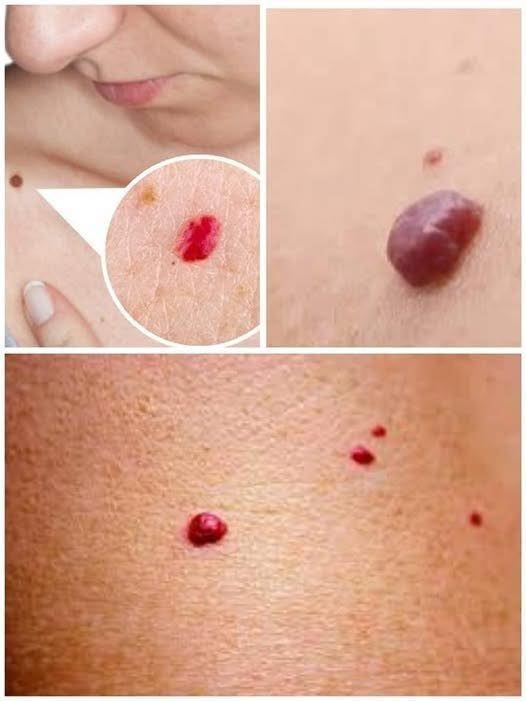ADVERTISEMENT
#### **3. Hormonal Changes**
Hormonal fluctuations can also play a role in the development of red moles. Changes in hormone levels during pregnancy, puberty, or menopause can cause the formation of cherry angiomas. For example, it is not uncommon for women to develop more red moles during pregnancy due to hormonal shifts.
#### **4. Environmental Factors**
Exposure to environmental factors such as sunlight, chemicals, or toxins may increase the likelihood of developing red moles. Ultraviolet (UV) radiation from the sun, in particular, is known to damage the skin and could potentially contribute to the formation of cherry angiomas. Similarly, exposure to certain chemicals or toxins in the environment can have an impact on the health of blood vessels and lead to the development of red moles.
#### **5. Medical Conditions**
While red moles are typically harmless, they can sometimes be associated with specific medical conditions. These conditions may contribute to the appearance or frequency of red moles on the skin. Some of the most common conditions linked to cherry angiomas include:
– **Liver Disease**: In some cases, the presence of red moles may be a sign of liver disease or liver dysfunction. When the liver is not functioning properly, the body may be less able to process toxins, leading to skin changes, including the development of cherry angiomas.
– **Autoimmune Disorders**: Certain autoimmune conditions, such as lupus or rheumatoid arthritis, can increase the likelihood of developing red moles. These disorders can affect blood vessels and lead to abnormal growths on the skin.
– **Hormonal Imbalances**: As mentioned earlier, hormonal fluctuations can contribute to the formation of red moles. Conditions that cause hormonal imbalances, such as polycystic ovary syndrome (PCOS), may increase the number of cherry angiomas.
– **Diabetes**: Some studies suggest a possible link between diabetes and the development of red moles. Although more research is needed to understand this connection fully, it is believed that high blood sugar levels can lead to damage in the blood vessels, potentially contributing to the formation of red moles.
#### **6. Blood Vessel Changes**
Cherry angiomas are essentially a result of blood vessel abnormalities. The formation of these moles occurs when small blood vessels, called capillaries, become dilated and cluster together in one area. This can happen as a result of the natural aging process, but it can also be triggered by changes in blood flow or pressure. In some cases, factors such as high blood pressure, blood clots, or varicose veins can contribute to the development of red moles.
### **What Do Red Moles Mean for Your Health?**
Red moles, or cherry angiomas, are usually harmless and do not pose a significant health risk. However, their appearance can serve as a signal that there may be underlying health issues. It is important to understand that the presence of red moles alone is not a definitive diagnosis of any particular condition. Rather, they may be one of several signs that your body is undergoing changes, particularly in relation to blood vessel health and circulation.
#### **1. Red Moles as a Sign of Aging**
In many cases, red moles are simply a sign of the natural aging process. As people get older, the skin becomes thinner, and blood vessels become more fragile. This can lead to the formation of cherry angiomas. If you notice the development of red moles as you age, it is most likely a benign, age-related change. In this case, there is usually no cause for concern.
#### **2. Red Moles and Hormonal Imbalances**
Red moles can also be an indication of hormonal imbalances in the body. Fluctuations in hormones, particularly during pregnancy, puberty, or menopause, can lead to the formation of cherry angiomas. If you develop a sudden increase in red moles during times of hormonal change, it may be worth consulting with a healthcare provider to ensure that everything is functioning normally.
#### **3. Liver Function and Red Moles**
As mentioned earlier, red moles can sometimes be associated with liver dysfunction or liver disease. In cases of liver problems, the body may not be able to detoxify effectively, leading to skin changes like the development of cherry angiomas. If you have a history of liver disease or other symptoms such as jaundice, fatigue, or abdominal pain, it is essential to discuss your red moles with a healthcare professional.
For Complete Cooking STEPS Please Head On Over To Next Page Or Open button (>) and don’t forget to SHARE with your Facebook friends
